-

Dec
11
Interpretive Summary: Supplementation with eicosapentaenoic and docosahexaenoic acids during late gestation alters fatty acid profiles in ewe colostrum, milk, and plasma, and lamb plasma

This experiment explored how eicosapentaenoic acid (EPA) and docosahexaenoic acid (DHA) supplementation during late gestation affects the fatty acid composition of dam plasma, milk, and plasma of the offspring. Pregnant ewes were divided into three groups, each receiving a different amount of an EPA and DHA source at 0, 1%, or 2% of dry matter intake.
Read more
-

Dec
11
Interpretive Summary: Effects of 3-nitrooxypropanol on methane emission, growth and feed intake in growing calves from 5 months of age
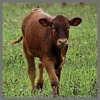
Non-lactating and non-dairy cattle are the largest animal source of methane emission, contributing to global warming. The use of feed additives has been demonstrated to be an effective strategy to reduce enteric methane emission from ruminants. This study aimed to investigate the effect of supplementing growing calves from 5 mo of age with the methane inhibitor 3-nitrooxypropanol (3-NOP).
Read more
-

Dec
11
Interpretive Summary: Effects of ginkgo leaf extract on growth performance, nutrient utilization, blood biochemical parameters, meat quality, fatty acid profiles, and gene expression in growing rabbits
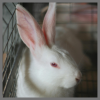
Oxidative stress is a condition that involves an imbalance of prooxidants and antioxidants, abnormally high levels of free radicals, and a decline in antioxidant defence mechanisms. Flavonoids are important feed additives, and are a group of naturally occurring polyphenols in plants that exhibit a broad variety of biological effects and have potential applications in animal feed. Ginkgo leaves are rich in flavonoids and have a strong antioxidant capacity, which can eliminate free radicals in the body and reduce oxidative stress reactions in animals.
Read more
-

Dec
11
Interpretive Summary: Effects of primary calcium source on phytase efficiency in weaned piglets
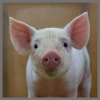
The use of calcium formate (Ca-formate) to partially or fully replace limestone in piglet diets is a nutritional strategy to reduce the dietary buffering capacity and lower stomach pH. Phytase activity is optimal at low pH, which raises the question of whether this strategy can also increase phytase efficiency.
Read more
-

Dec
11
Interpretive Summary: Klebsiella pneumoniae causes mammary gland damage via FNIP1-mediated mitochondrial dysfunction
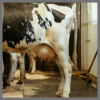
Bovine mastitis, a significant inflammatory response of the mammary gland, adversely impacts dairy cow health and milk production globally. Klebsiella pneumoniae (K. pneumoniae) has been identified as the important bacterium causing mastitis in dairy cows. However, the mechanism remains to be fully elucidated.
Read more
-

Dec
11
Interpretive Summary: Cortisol promotes placental glucose and amino acids transport by activating the mechanistic target of rapamycin complex 1 signaling pathway
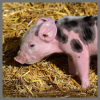
Low birth weight (LBW) has always been an important problem in animal husbandry, contributing to high mortality and morbidity rates in the neonatal period. Placental and fetal development are regulated by hormones, and studies have shown that cortisol has the ability to regulate nutrients transport during placental development, but the specific mechanism is not clear.
Read more
-

Dec
04
Interpretive Summary: Effects of variety and botanical part on rates and amounts of ruminal nutrient disappearance from Cannabis sativa
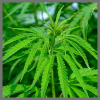
Agronomic production of industrial hemp was relegalized in the United States in 2018, and the residual biomass of hemp may be useful as an alternative roughage source to cattle. Previous studies have used mostly in vitro methods to estimate the nutritional value of hemp to cattle, and data are still limited on how hemp variety and botanical parts influence estimates of the nutritional value of hemp.
Read more
-

Dec
04
Interpretive Summary: Dose–response effects of a mixed condensed and hydrolyzable tannin extract on methane production and diet digestibility using the in vitro gas production technique

Ruminant animals naturally produce methane during fermentative processes; however, this process represents a loss of dietary energy and has been scrutinized for its potential environmental impacts. Nutritional management strategies, such as the use of feed additives, have been investigated as a possible option for mitigating greenhouse gas emissions from beef cattle.
Read more
-

Dec
04
Interpretive Summary: Effect of indigestible dietary protein on growth performance and health status of weaned pigs
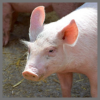
The amount of dietary protein (DP), specifically reduced DP, in weaned diets has inconsistent effects on performance and gut health of nursery pigs. The conflicting results may be due to the variability in the digestibility of protein ingredients and may differentially contribute to protein flow into the hindgut. Therefore, it is possible to formulate diets with similar DP but varying indigestible dietary protein (IDP) fraction.
Read more
-

Dec
04
Interpretive Summary: Diluting a diet with oat hulls of different particle size enhances gastrointestinal development and function of weanling pigs
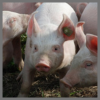
The current study investigated how the addition of either finely or coarsely ground oat hulls (as an insoluble fiber source) at 15% affected gastrointestinal development and function during the immediate post-weaning period. We observed improvements in parameters related to gastrointestinal development and function.
Read more
-

Dec
04
Interpretive Summary: Development of a computer-controlled closed-circuit respiratory calorimetry system to determine dietary energy utilization in broilers
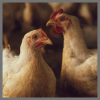
This study developed a computer-controlled closed-circuit respiratory calorimetry system to accurately measure oxygen (O2) consumption and carbon dioxide (CO2) production in broilers, which are essential for determining total heat production. The system includes components for controlling the chamber environment, quantifying O2 use, filtering air, and absorbing CO2.
Read more
-

Dec
04
Interpretive Summary: Effects of clodronate disodium on markers of inflammation and cartilage metabolism in juvenile horses challenged with intra-articular lipopolysaccharide

Extra-label bisphosphonate use has occurred in the juvenile horse despite a lack of scientific evidence, due to perceived anti-inflammatory and chondroprotective benefits. The purpose of this study was to evaluate the effects of clodronate disodium (CD) on biomarkers of cartilage metabolism and intra-articular inflammation within the articulating joint of the juvenile horse using an intra-articular inflammatory model.
Read more
-

Dec
04
Interpretive Summary: Microbiota diversity and association with performance phenotypes in beef bulls
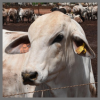
Microorganisms that live in the digestive system of cattle help break down food, improve nutrient absorption, and can even affect how much methane the animals produce. These microbes may also influence traits important to beef production, such as meat quality and animal growth.
Read more
-

Nov
21
Washington Roundup – November 2025

On November 12th, President Trump signed legislation ending the longest government shutdown on record. Democrats and Republicans had been at an impasse since the shutdown began, but negotiators were ultimately successful in getting a package to pass the Senate by a filibuster proof margin. The House quickly moved to approve the Senate legislation sending the bill to the White House for signature.
Read more
-

Nov
18
The Giving Herd - ASAS Foundation Newsletter - November 2025

The November Edition of The Giving Herd, an ASAS Foundation Newsletter
Read more
-

Nov
18
Dr. George Fahey's Animal Science Journey

George Fahey's Animal Science Journey
Read more
-

Nov
13
Interpretive Summary: Persistence of subacute ruminal acidosis across first and second lactations in dairy cows based on reticular pH metrics and microbiota, and systemic health responses

Subacute rumen acidosis (SARA) is a common dairy herd health issue. Variation among cows in the severity of SARA is a chance to understand the etiology of SARA and prevent the disease. The aim of this study was to determine the relationship between the severities of SARA in the first lactation with that in the second lactation in terms of reticular pH metrics, microbiota and systemic health.
Read more
-

Nov
13
Interpretive Summary: The effect of fumaric acid on ruminant enteric methane emission and ruminal volatile fatty acids concentration: a meta-analysis
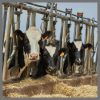
Fumaric acid can be supplemented in the ruminants’ diets without compromising DMI. However, reductions in methane production and yield were observed only in small ruminant (sheep and goats), whoever FA supplementation appears to be less effective in mitigating methane emissions in cattle.
Read more
-

Nov
13
Interpretive Summary: On-top arginine supplementation during lactation affects milk composition, performance, and intestinal bacterial and viral microbial community of sows and their piglets
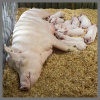
The gut microbiome, which is made up of bacteria, viruses, and fungi, plays a crucial role in the development of a newborn’s digestive and immune systems. The composition of this microbiome is influenced by several factors, including the diet of the mother. This study focused on how supplementing the diet of lactating sows with a specific amino acid, i.e. arginine (Arg), can affect the growth and health of piglets, as well as their gut microbiome.
Read more
-

Nov
13
Interpretive Summary: Effects of hydrolyzed yeast on weanling pig growth performance, fecal dry matter, and stress-related blood antioxidant criteria
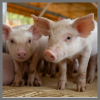
Feed-grade medications have been widely used in swine production due to their ability to treat a diagnosed pathogen challenge, regulate gut microbiota, promote growth, enhance feed efficiency, and reduce inflammation. Due to concerns of bacterial resistance, some feed-grade medications have been restricted as a growth promotor in some countries.
Read more
 DecInterpretive Summary: Supplementation with eicosapentaenoic and docosahexaenoic acids during late gestation alters fatty acid profiles in ewe colostrum, milk, and plasma, and lamb plasma
DecInterpretive Summary: Supplementation with eicosapentaenoic and docosahexaenoic acids during late gestation alters fatty acid profiles in ewe colostrum, milk, and plasma, and lamb plasma This experiment explored how eicosapentaenoic acid (EPA) and docosahexaenoic acid (DHA) supplementation during late gestation affects the fatty acid composition of dam plasma, milk, and plasma of the offspring. Pregnant ewes were divided into three groups, each receiving a different amount of an EPA and DHA source at 0, 1%, or 2% of dry matter intake.
This experiment explored how eicosapentaenoic acid (EPA) and docosahexaenoic acid (DHA) supplementation during late gestation affects the fatty acid composition of dam plasma, milk, and plasma of the offspring. Pregnant ewes were divided into three groups, each receiving a different amount of an EPA and DHA source at 0, 1%, or 2% of dry matter intake. DecInterpretive Summary: Effects of 3-nitrooxypropanol on methane emission, growth and feed intake in growing calves from 5 months of age
DecInterpretive Summary: Effects of 3-nitrooxypropanol on methane emission, growth and feed intake in growing calves from 5 months of age Non-lactating and non-dairy cattle are the largest animal source of methane emission, contributing to global warming. The use of feed additives has been demonstrated to be an effective strategy to reduce enteric methane emission from ruminants. This study aimed to investigate the effect of supplementing growing calves from 5 mo of age with the methane inhibitor 3-nitrooxypropanol (3-NOP).
Non-lactating and non-dairy cattle are the largest animal source of methane emission, contributing to global warming. The use of feed additives has been demonstrated to be an effective strategy to reduce enteric methane emission from ruminants. This study aimed to investigate the effect of supplementing growing calves from 5 mo of age with the methane inhibitor 3-nitrooxypropanol (3-NOP). DecInterpretive Summary: Effects of ginkgo leaf extract on growth performance, nutrient utilization, blood biochemical parameters, meat quality, fatty acid profiles, and gene expression in growing rabbits
DecInterpretive Summary: Effects of ginkgo leaf extract on growth performance, nutrient utilization, blood biochemical parameters, meat quality, fatty acid profiles, and gene expression in growing rabbits Oxidative stress is a condition that involves an imbalance of prooxidants and antioxidants, abnormally high levels of free radicals, and a decline in antioxidant defence mechanisms. Flavonoids are important feed additives, and are a group of naturally occurring polyphenols in plants that exhibit a broad variety of biological effects and have potential applications in animal feed. Ginkgo leaves are rich in flavonoids and have a strong antioxidant capacity, which can eliminate free radicals in the body and reduce oxidative stress reactions in animals.
Oxidative stress is a condition that involves an imbalance of prooxidants and antioxidants, abnormally high levels of free radicals, and a decline in antioxidant defence mechanisms. Flavonoids are important feed additives, and are a group of naturally occurring polyphenols in plants that exhibit a broad variety of biological effects and have potential applications in animal feed. Ginkgo leaves are rich in flavonoids and have a strong antioxidant capacity, which can eliminate free radicals in the body and reduce oxidative stress reactions in animals. DecInterpretive Summary: Effects of primary calcium source on phytase efficiency in weaned piglets
DecInterpretive Summary: Effects of primary calcium source on phytase efficiency in weaned piglets The use of calcium formate (Ca-formate) to partially or fully replace limestone in piglet diets is a nutritional strategy to reduce the dietary buffering capacity and lower stomach pH. Phytase activity is optimal at low pH, which raises the question of whether this strategy can also increase phytase efficiency.
The use of calcium formate (Ca-formate) to partially or fully replace limestone in piglet diets is a nutritional strategy to reduce the dietary buffering capacity and lower stomach pH. Phytase activity is optimal at low pH, which raises the question of whether this strategy can also increase phytase efficiency. DecInterpretive Summary: Klebsiella pneumoniae causes mammary gland damage via FNIP1-mediated mitochondrial dysfunction
DecInterpretive Summary: Klebsiella pneumoniae causes mammary gland damage via FNIP1-mediated mitochondrial dysfunction Bovine mastitis, a significant inflammatory response of the mammary gland, adversely impacts dairy cow health and milk production globally. Klebsiella pneumoniae (K. pneumoniae) has been identified as the important bacterium causing mastitis in dairy cows. However, the mechanism remains to be fully elucidated.
Bovine mastitis, a significant inflammatory response of the mammary gland, adversely impacts dairy cow health and milk production globally. Klebsiella pneumoniae (K. pneumoniae) has been identified as the important bacterium causing mastitis in dairy cows. However, the mechanism remains to be fully elucidated. DecInterpretive Summary: Cortisol promotes placental glucose and amino acids transport by activating the mechanistic target of rapamycin complex 1 signaling pathway
DecInterpretive Summary: Cortisol promotes placental glucose and amino acids transport by activating the mechanistic target of rapamycin complex 1 signaling pathway Low birth weight (LBW) has always been an important problem in animal husbandry, contributing to high mortality and morbidity rates in the neonatal period. Placental and fetal development are regulated by hormones, and studies have shown that cortisol has the ability to regulate nutrients transport during placental development, but the specific mechanism is not clear.
Low birth weight (LBW) has always been an important problem in animal husbandry, contributing to high mortality and morbidity rates in the neonatal period. Placental and fetal development are regulated by hormones, and studies have shown that cortisol has the ability to regulate nutrients transport during placental development, but the specific mechanism is not clear. DecInterpretive Summary: Effects of variety and botanical part on rates and amounts of ruminal nutrient disappearance from Cannabis sativa
DecInterpretive Summary: Effects of variety and botanical part on rates and amounts of ruminal nutrient disappearance from Cannabis sativa Agronomic production of industrial hemp was relegalized in the United States in 2018, and the residual biomass of hemp may be useful as an alternative roughage source to cattle. Previous studies have used mostly in vitro methods to estimate the nutritional value of hemp to cattle, and data are still limited on how hemp variety and botanical parts influence estimates of the nutritional value of hemp.
Agronomic production of industrial hemp was relegalized in the United States in 2018, and the residual biomass of hemp may be useful as an alternative roughage source to cattle. Previous studies have used mostly in vitro methods to estimate the nutritional value of hemp to cattle, and data are still limited on how hemp variety and botanical parts influence estimates of the nutritional value of hemp. DecInterpretive Summary: Dose–response effects of a mixed condensed and hydrolyzable tannin extract on methane production and diet digestibility using the in vitro gas production technique
DecInterpretive Summary: Dose–response effects of a mixed condensed and hydrolyzable tannin extract on methane production and diet digestibility using the in vitro gas production technique Ruminant animals naturally produce methane during fermentative processes; however, this process represents a loss of dietary energy and has been scrutinized for its potential environmental impacts. Nutritional management strategies, such as the use of feed additives, have been investigated as a possible option for mitigating greenhouse gas emissions from beef cattle.
Ruminant animals naturally produce methane during fermentative processes; however, this process represents a loss of dietary energy and has been scrutinized for its potential environmental impacts. Nutritional management strategies, such as the use of feed additives, have been investigated as a possible option for mitigating greenhouse gas emissions from beef cattle. DecInterpretive Summary: Effect of indigestible dietary protein on growth performance and health status of weaned pigs
DecInterpretive Summary: Effect of indigestible dietary protein on growth performance and health status of weaned pigs The amount of dietary protein (DP), specifically reduced DP, in weaned diets has inconsistent effects on performance and gut health of nursery pigs. The conflicting results may be due to the variability in the digestibility of protein ingredients and may differentially contribute to protein flow into the hindgut. Therefore, it is possible to formulate diets with similar DP but varying indigestible dietary protein (IDP) fraction.
The amount of dietary protein (DP), specifically reduced DP, in weaned diets has inconsistent effects on performance and gut health of nursery pigs. The conflicting results may be due to the variability in the digestibility of protein ingredients and may differentially contribute to protein flow into the hindgut. Therefore, it is possible to formulate diets with similar DP but varying indigestible dietary protein (IDP) fraction. DecInterpretive Summary: Diluting a diet with oat hulls of different particle size enhances gastrointestinal development and function of weanling pigs
DecInterpretive Summary: Diluting a diet with oat hulls of different particle size enhances gastrointestinal development and function of weanling pigs The current study investigated how the addition of either finely or coarsely ground oat hulls (as an insoluble fiber source) at 15% affected gastrointestinal development and function during the immediate post-weaning period. We observed improvements in parameters related to gastrointestinal development and function.
The current study investigated how the addition of either finely or coarsely ground oat hulls (as an insoluble fiber source) at 15% affected gastrointestinal development and function during the immediate post-weaning period. We observed improvements in parameters related to gastrointestinal development and function. DecInterpretive Summary: Development of a computer-controlled closed-circuit respiratory calorimetry system to determine dietary energy utilization in broilers
DecInterpretive Summary: Development of a computer-controlled closed-circuit respiratory calorimetry system to determine dietary energy utilization in broilers This study developed a computer-controlled closed-circuit respiratory calorimetry system to accurately measure oxygen (O2) consumption and carbon dioxide (CO2) production in broilers, which are essential for determining total heat production. The system includes components for controlling the chamber environment, quantifying O2 use, filtering air, and absorbing CO2.
This study developed a computer-controlled closed-circuit respiratory calorimetry system to accurately measure oxygen (O2) consumption and carbon dioxide (CO2) production in broilers, which are essential for determining total heat production. The system includes components for controlling the chamber environment, quantifying O2 use, filtering air, and absorbing CO2. DecInterpretive Summary: Effects of clodronate disodium on markers of inflammation and cartilage metabolism in juvenile horses challenged with intra-articular lipopolysaccharide
DecInterpretive Summary: Effects of clodronate disodium on markers of inflammation and cartilage metabolism in juvenile horses challenged with intra-articular lipopolysaccharide Extra-label bisphosphonate use has occurred in the juvenile horse despite a lack of scientific evidence, due to perceived anti-inflammatory and chondroprotective benefits. The purpose of this study was to evaluate the effects of clodronate disodium (CD) on biomarkers of cartilage metabolism and intra-articular inflammation within the articulating joint of the juvenile horse using an intra-articular inflammatory model.
Extra-label bisphosphonate use has occurred in the juvenile horse despite a lack of scientific evidence, due to perceived anti-inflammatory and chondroprotective benefits. The purpose of this study was to evaluate the effects of clodronate disodium (CD) on biomarkers of cartilage metabolism and intra-articular inflammation within the articulating joint of the juvenile horse using an intra-articular inflammatory model. DecInterpretive Summary: Microbiota diversity and association with performance phenotypes in beef bulls
DecInterpretive Summary: Microbiota diversity and association with performance phenotypes in beef bulls Microorganisms that live in the digestive system of cattle help break down food, improve nutrient absorption, and can even affect how much methane the animals produce. These microbes may also influence traits important to beef production, such as meat quality and animal growth.
Microorganisms that live in the digestive system of cattle help break down food, improve nutrient absorption, and can even affect how much methane the animals produce. These microbes may also influence traits important to beef production, such as meat quality and animal growth. NovWashington Roundup – November 2025
NovWashington Roundup – November 2025 On November 12th, President Trump signed legislation ending the longest government shutdown on record. Democrats and Republicans had been at an impasse since the shutdown began, but negotiators were ultimately successful in getting a package to pass the Senate by a filibuster proof margin. The House quickly moved to approve the Senate legislation sending the bill to the White House for signature.
On November 12th, President Trump signed legislation ending the longest government shutdown on record. Democrats and Republicans had been at an impasse since the shutdown began, but negotiators were ultimately successful in getting a package to pass the Senate by a filibuster proof margin. The House quickly moved to approve the Senate legislation sending the bill to the White House for signature. NovThe Giving Herd - ASAS Foundation Newsletter - November 2025
NovThe Giving Herd - ASAS Foundation Newsletter - November 2025 The November Edition of The Giving Herd, an ASAS Foundation Newsletter
The November Edition of The Giving Herd, an ASAS Foundation Newsletter NovDr. George Fahey's Animal Science Journey
NovDr. George Fahey's Animal Science Journey George Fahey's Animal Science Journey
George Fahey's Animal Science Journey NovInterpretive Summary: Persistence of subacute ruminal acidosis across first and second lactations in dairy cows based on reticular pH metrics and microbiota, and systemic health responses
NovInterpretive Summary: Persistence of subacute ruminal acidosis across first and second lactations in dairy cows based on reticular pH metrics and microbiota, and systemic health responses Subacute rumen acidosis (SARA) is a common dairy herd health issue. Variation among cows in the severity of SARA is a chance to understand the etiology of SARA and prevent the disease. The aim of this study was to determine the relationship between the severities of SARA in the first lactation with that in the second lactation in terms of reticular pH metrics, microbiota and systemic health.
Subacute rumen acidosis (SARA) is a common dairy herd health issue. Variation among cows in the severity of SARA is a chance to understand the etiology of SARA and prevent the disease. The aim of this study was to determine the relationship between the severities of SARA in the first lactation with that in the second lactation in terms of reticular pH metrics, microbiota and systemic health. NovInterpretive Summary: The effect of fumaric acid on ruminant enteric methane emission and ruminal volatile fatty acids concentration: a meta-analysis
NovInterpretive Summary: The effect of fumaric acid on ruminant enteric methane emission and ruminal volatile fatty acids concentration: a meta-analysis Fumaric acid can be supplemented in the ruminants’ diets without compromising DMI. However, reductions in methane production and yield were observed only in small ruminant (sheep and goats), whoever FA supplementation appears to be less effective in mitigating methane emissions in cattle.
Fumaric acid can be supplemented in the ruminants’ diets without compromising DMI. However, reductions in methane production and yield were observed only in small ruminant (sheep and goats), whoever FA supplementation appears to be less effective in mitigating methane emissions in cattle. NovInterpretive Summary: On-top arginine supplementation during lactation affects milk composition, performance, and intestinal bacterial and viral microbial community of sows and their piglets
NovInterpretive Summary: On-top arginine supplementation during lactation affects milk composition, performance, and intestinal bacterial and viral microbial community of sows and their piglets The gut microbiome, which is made up of bacteria, viruses, and fungi, plays a crucial role in the development of a newborn’s digestive and immune systems. The composition of this microbiome is influenced by several factors, including the diet of the mother. This study focused on how supplementing the diet of lactating sows with a specific amino acid, i.e. arginine (Arg), can affect the growth and health of piglets, as well as their gut microbiome.
The gut microbiome, which is made up of bacteria, viruses, and fungi, plays a crucial role in the development of a newborn’s digestive and immune systems. The composition of this microbiome is influenced by several factors, including the diet of the mother. This study focused on how supplementing the diet of lactating sows with a specific amino acid, i.e. arginine (Arg), can affect the growth and health of piglets, as well as their gut microbiome. NovInterpretive Summary: Effects of hydrolyzed yeast on weanling pig growth performance, fecal dry matter, and stress-related blood antioxidant criteria
NovInterpretive Summary: Effects of hydrolyzed yeast on weanling pig growth performance, fecal dry matter, and stress-related blood antioxidant criteria Feed-grade medications have been widely used in swine production due to their ability to treat a diagnosed pathogen challenge, regulate gut microbiota, promote growth, enhance feed efficiency, and reduce inflammation. Due to concerns of bacterial resistance, some feed-grade medications have been restricted as a growth promotor in some countries.
Feed-grade medications have been widely used in swine production due to their ability to treat a diagnosed pathogen challenge, regulate gut microbiota, promote growth, enhance feed efficiency, and reduce inflammation. Due to concerns of bacterial resistance, some feed-grade medications have been restricted as a growth promotor in some countries.



